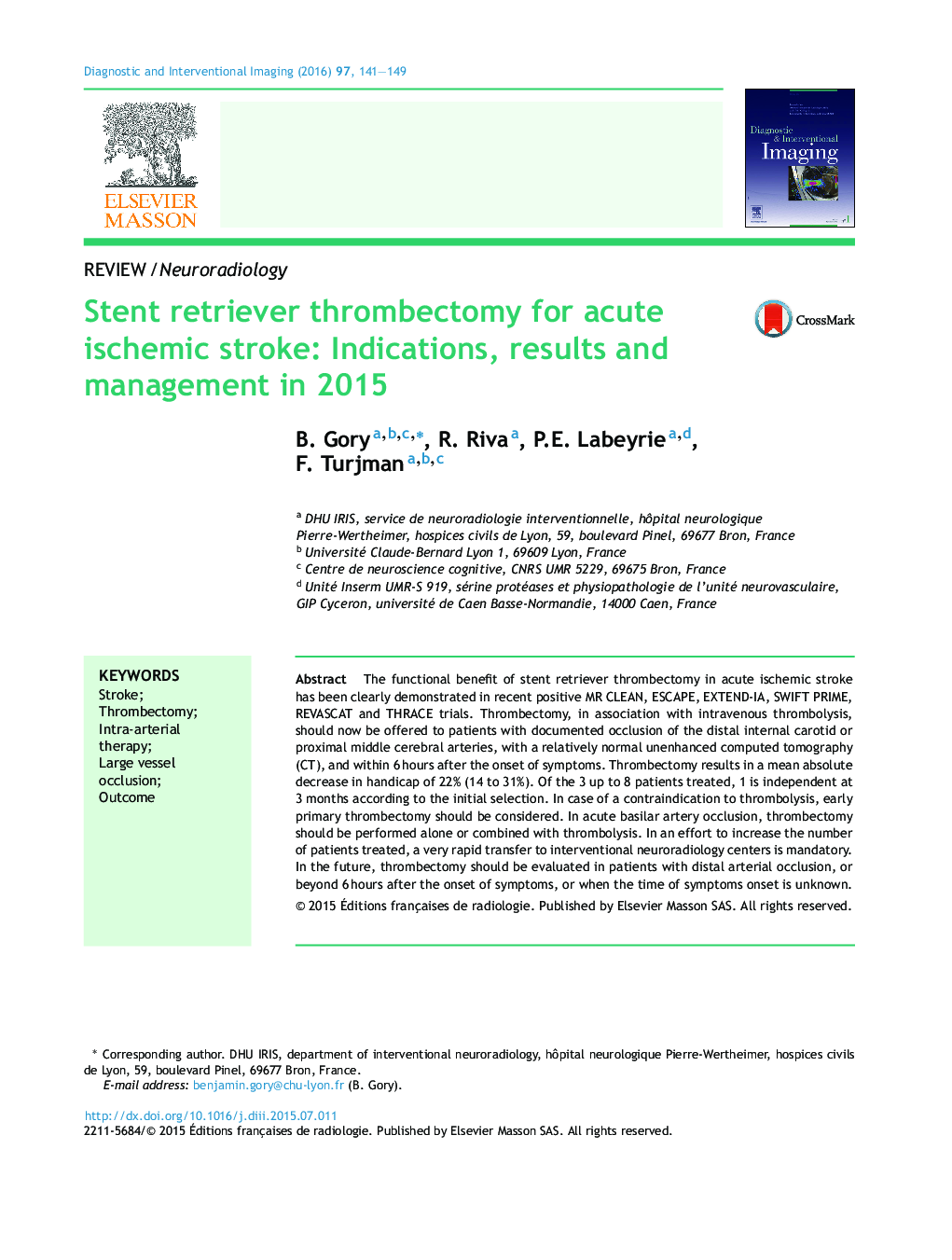| Article ID | Journal | Published Year | Pages | File Type |
|---|---|---|---|---|
| 2733573 | Diagnostic and Interventional Imaging | 2016 | 9 Pages |
The functional benefit of stent retriever thrombectomy in acute ischemic stroke has been clearly demonstrated in recent positive MR CLEAN, ESCAPE, EXTEND-IA, SWIFT PRIME, REVASCAT and THRACE trials. Thrombectomy, in association with intravenous thrombolysis, should now be offered to patients with documented occlusion of the distal internal carotid or proximal middle cerebral arteries, with a relatively normal unenhanced computed tomography (CT), and within 6 hours after the onset of symptoms. Thrombectomy results in a mean absolute decrease in handicap of 22% (14 to 31%). Of the 3 up to 8 patients treated, 1 is independent at 3 months according to the initial selection. In case of a contraindication to thrombolysis, early primary thrombectomy should be considered. In acute basilar artery occlusion, thrombectomy should be performed alone or combined with thrombolysis. In an effort to increase the number of patients treated, a very rapid transfer to interventional neuroradiology centers is mandatory. In the future, thrombectomy should be evaluated in patients with distal arterial occlusion, or beyond 6 hours after the onset of symptoms, or when the time of symptoms onset is unknown.
